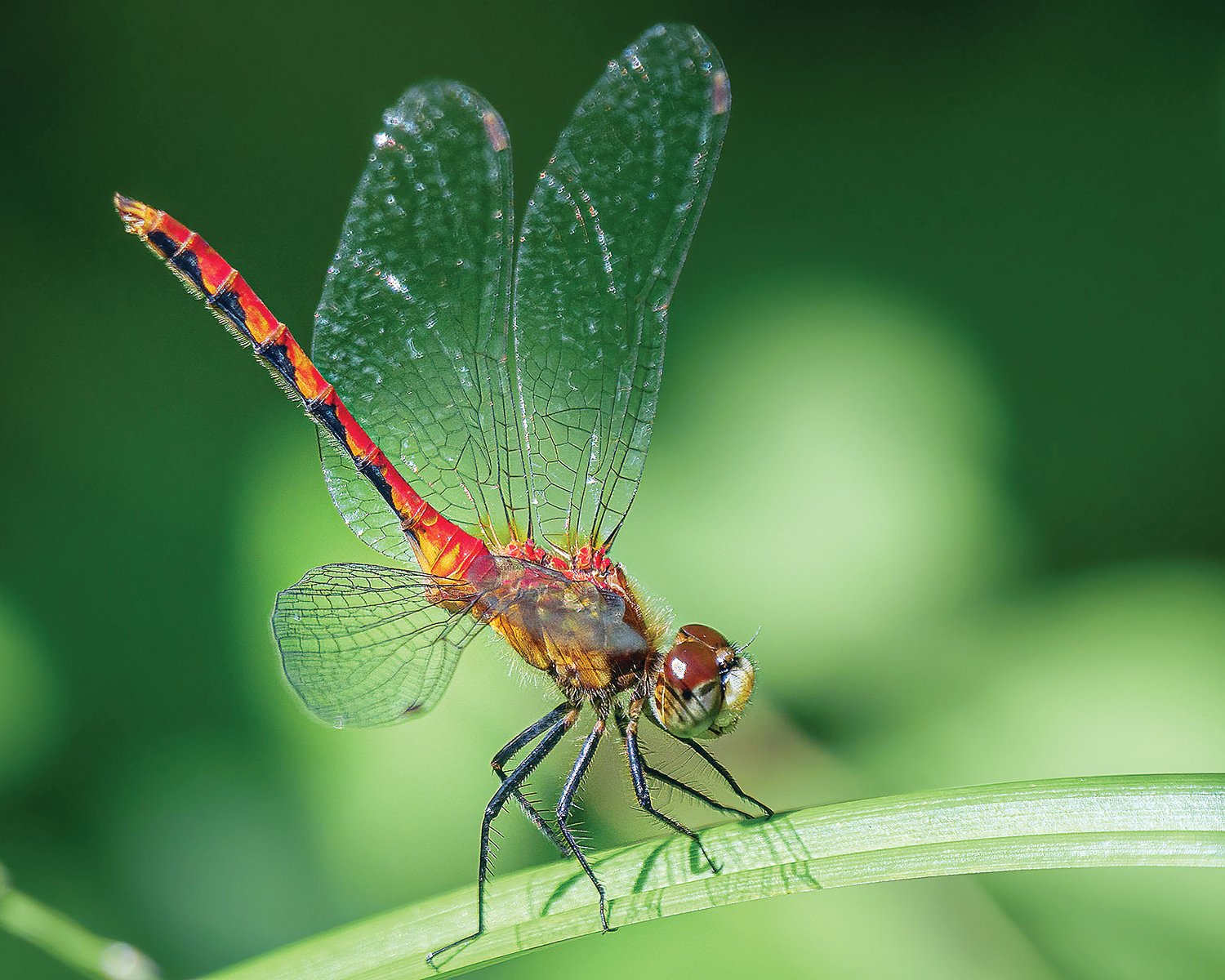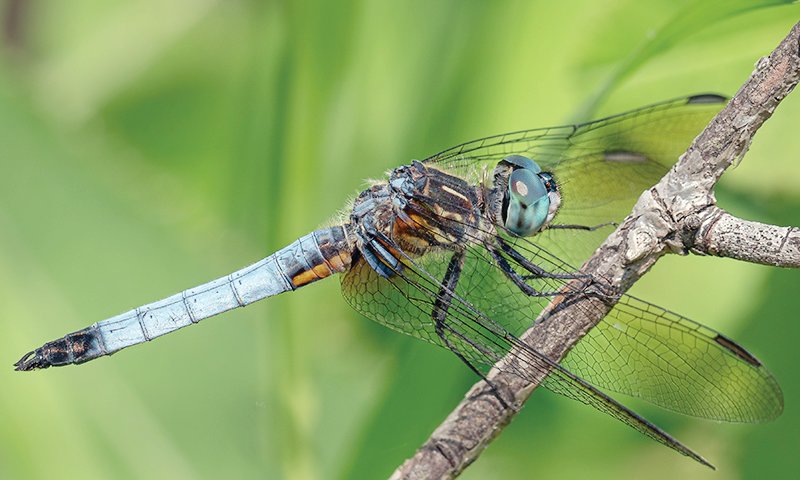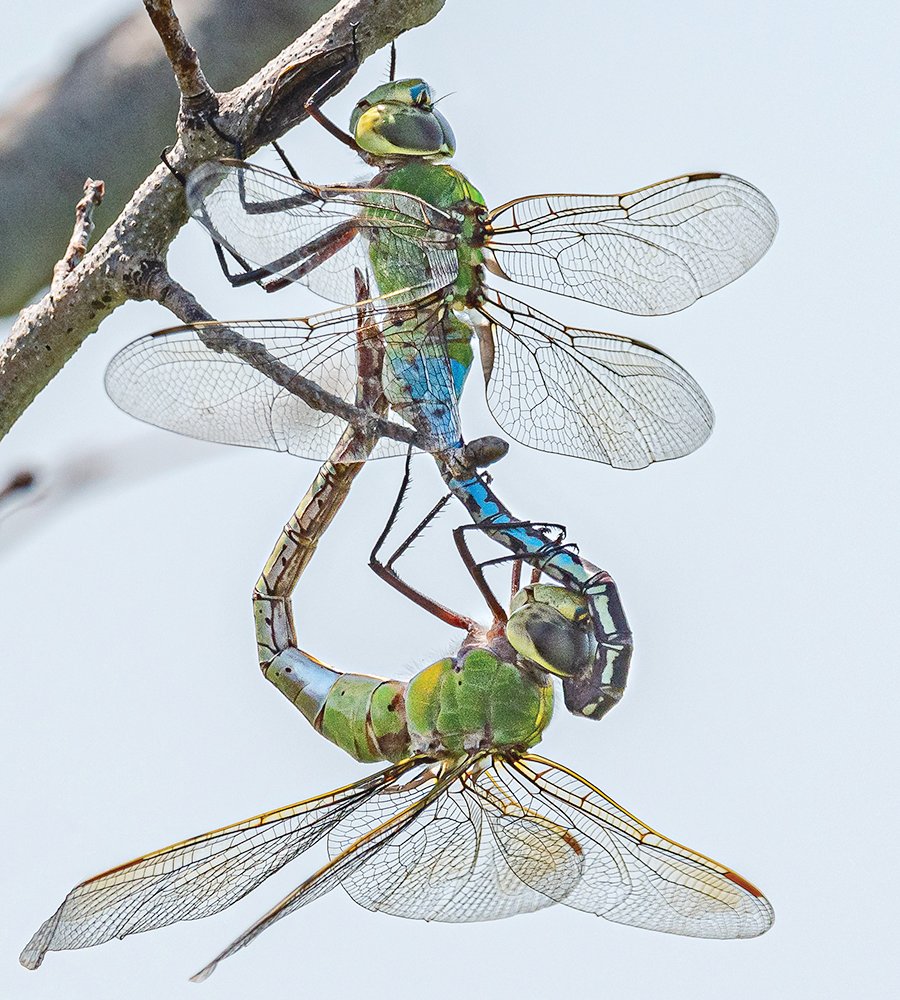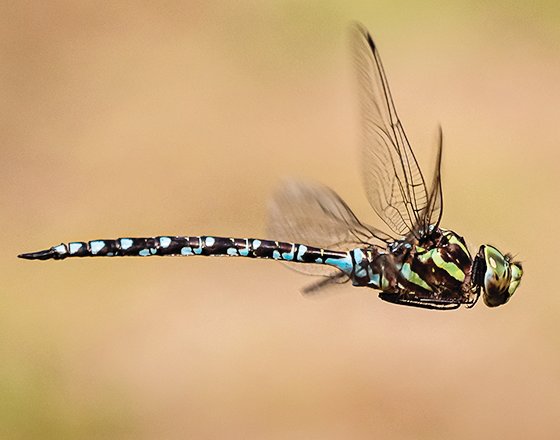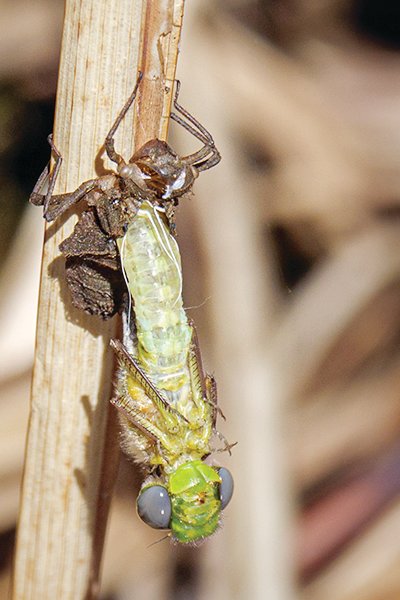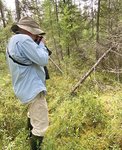Support the Timberjay by making a donation.
Dragons on the wing
Embarrass nature enthusiast captures the beauty of a remarkable insect family
For most residents of the North Country, our knowledge and interest in dragonflies can be as fleeting as their appearance over the dock, the patio, or the garden. I’ve always looked at the …
This item is available in full to subscribers.
Attention subscribers
To continue reading, you will need to either log in to your subscriber account, or purchase a new subscription.
If you are a current print subscriber, you can set up a free website account and connect your subscription to it by clicking here.
If you are a digital subscriber with an active, online-only subscription then you already have an account here. Just reset your password if you've not yet logged in to your account on this new site.
Otherwise, click here to view your options for subscribing.
Please log in to continue |
Dragons on the wing
Embarrass nature enthusiast captures the beauty of a remarkable insect family
For most residents of the North Country, our knowledge and interest in dragonflies can be as fleeting as their appearance over the dock, the patio, or the garden. I’ve always looked at the dragonflies as my allies when I’m working in my vegetable beds. By early June, the mosquitoes and deer flies are typically out in full force, which can make it pretty miserable to spend time outdoors, at least here on the edge of the Lost Lake Swamp.
But then the dragonflies arrive, having emerged from the watery world in which they live most of their lives, to spend a few weeks putting the fear of the dragon into those pesky biting bugs. Often, they arrive like a squadron of fighter jets and, just like magic, the deer flies seem to disappear.
For a long time, I was content to cheer them on, without paying much more attention.
It was much the same for many years for David Smith and Suzanne Winckler, who spend the warmer months on their former Finnish homestead in Pike Township. They’ve been students of the natural world for years. We’re friends, as well. We’ve birded together numerous times, visited remnant prairies in northwestern Minnesota together, and searched for early summer orchids in the Lost Lake Swamp.
Yet, up until this year, the subject of dragonflies never really came up. It’s now their newest obsession.
“It’s a little embarrassing I’ve overlooked them all these years,” said Suzanne, who initially followed David’s lead into the world of these remarkable insects, but has since found them to be as fascinating as he does. Longtime, avid birders, they more often train their binoculars on these smaller subjects these days. Even with binoculars, however, it can be difficult to identify dragonflies in the field. So, David has begun photographing them as well, which makes identification far easier. “I’ve always wanted to know what I was looking at but was always frustrated trying to remember details in order to identify them in a guide,” said David. “When I started taking photos of insects, it made all the difference. You can sit at home at your leisure and figure out what these things are.”
Dragonflies make a particularly appealing target for his photography, both because they’re large for insects and because they are often brightly colored. Suzanne offers a more superlative description: “They are absolutely stunningly gorgeous,” she said.
The couple’s interest in dragonflies now extends well beyond their backyard in Embarrass. They observe and document dragonflies during the winter months near their home in northwestern Mexico. And they recently traveled to northern Wisconsin to look for species they hadn’t found here in Minnesota.
Just as birders go “birding”, they even have a name for their treks in search of dragonflies.
“We call it ‘odonating,’” said Suzanne, a reference to the family of insects, Odonata (pronounced oh-doh-NAH-tah), which includes the dragonflies and their close relatives, the typically-more delicate damselflies, both of which appeal to David and Suzanne. The North Country is home to about 70 species of dragonflies and another 25 species of damselflies.
David, a retired research cell biologist for the Mayo Clinic, is detail oriented and that’s where he finds the most satisfaction from his newfound interest. “As you really look at the detail, you just get fascinated by the beauty of these creatures,” he said.
For David, in particular, the interest in Odonates goes beyond just hunting, photographing, and identifying species he hasn’t seen before. He’s also delved into learning much more about the lives of the species he finds. While there isn’t a vast literature on the Odonata, there are certainly some books that David has found extremely helpful as he pursues his newfound passion. You’ll find more on his recommended books at the end of this story.
The number of books on the subject is likely to continue to increase as interest in the Odonata grows. Some have compared “dragonflying” as it’s more often described, to the early days of birding, and it has attracted a wide spectrum of interest, from the casual to the hardcore.
David admits he’s moved beyond mere casual interest. “You could call me an enthusiast,” he said. His involvement now includes corresponding with some of the top experts in the world on the Odonata, whom he has found to be remarkably accessible and encouraging of his work.
“Turns out all these people are extremely nice, at least as long as you’re talking about dragonflies,” he said. “They’re interested in novel reports, and share in the excitement of seeing something unusual.”
While David hasn’t found anything out of the ordinary in Minnesota, at least not yet, he’s had more interesting finds near his winter home in Alamos, Mexico, so he’s had plenty to talk about with some of the field’s top researchers.
It’s all helped to fuel his interest in the hunt for new Odonata, and both he and Suzanne are routinely exploring new habitats around the North Country. Suzanne, a semi-retired journalist and longtime birder, notes that Odonates are often as tied to specific habitats as birds. The damselflies, in particular, are found along streams, but even within that broad category of habitat are numerous micro-habitats, that depend on the type of vegetation found streamside, or whether the location is sunny or shaded. “It’s fun to go into all the different habitats and have an idea of what might just turn up where,” said Suzanne.
There’s also the question of when. While most of us recognize that dragonflies are only active in the summer here in the North Country, the summer can actually be divided into many of its own “seasons” when you can expect to find certain Odonata. These insects spend the vast majority of their lives as underwater nymphs, and only live as modern day dragons for a few weeks each summer. Certain species emerge for their reign in the sky in early June, only to be replaced by other species in turn as the summer wears on. With many dozens of species, it’s a lot to learn, but for now David and Suzanne are eagerly soaking it all up.
And their hunt for new species shows how interest in Odonates can lead to new explorations. David is now on the hunt for a highly specialized species of dragonfly, known as the elfin skimmer, which at just three-quarters of an inch in length, is the smallest dragonfly in North America. They’re found almost exclusively in alkaline or calcareous floating bogs. He’s now researching the locations of such formations in hopes of adding one of these tiny, bright blue dragons to his Odonata life list.
For Suzanne, delving into the world of the Odonata, is simply an extension of her and David’s longtime interest in the natural world. “I can’t imagine not having that base of interest in what’s around me,” she said. “It’s what makes life rich.”
Books on Odonata
Dragonflies of the North Woods, by Kurt Mead
Dragonflies and damselflies: A natural history, by Dennis Paulson.

